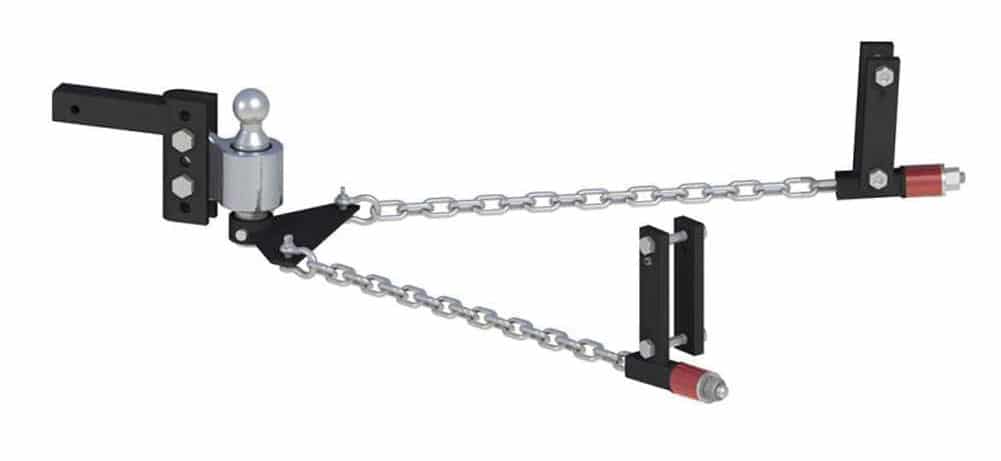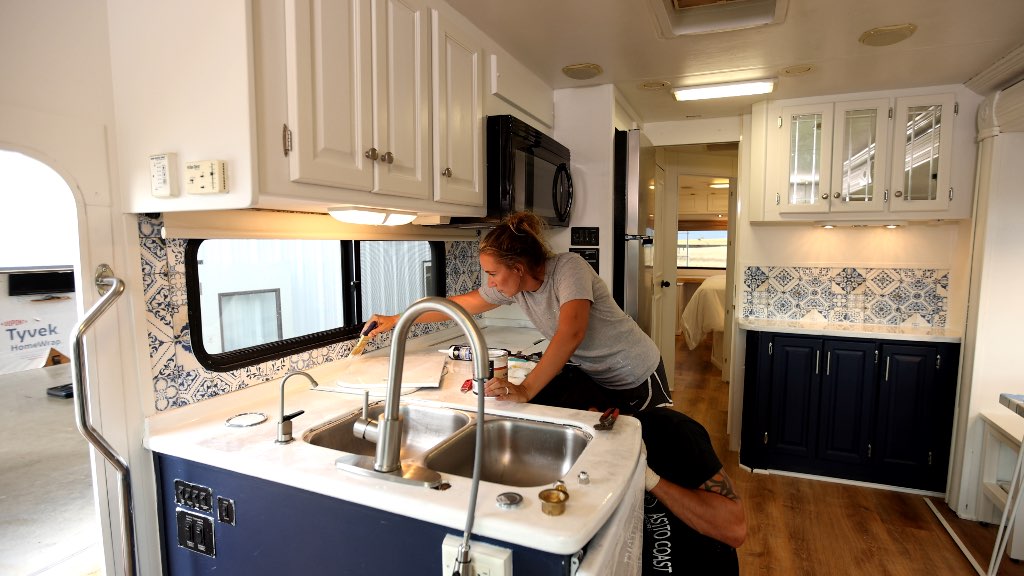Tech Q&A Tuesday: Furrion Frustrations, Hitch Questions, and More
We Answer Some of Your Burning Questions on RV Maintenance, Gear, and Tech
Image Caption:
Furrion Frustration
Q: We have a Palomino Columbus F329DV fifth-wheel trailer. We’re very happy with the RV. However, the Furrion oven is a different story. It can take up to four minutes on my hands and knees to light the oven each day. What is my problem, what causes it, and what can I do about it?
—Mike Morrison, Hot Springs, AR
A: Don’t feel bad. Apparently, quite a few other people also have had problems lighting the Furrion brand oven because there are a number of online instructional videos showing how to do it. When you are ready to light the oven, press in on the knob on the right while turning it left (counter-clockwise). Hold it in for about 30 seconds, and then activate the spark lighter using the left knob. Hopefully, this will solve your problem. Click here for a YouTube video on the subject.
Hitch Question
Q: After years of tent and pop-up camping, I bought a Keystone Passport GT 2600Bh travel trailer this past June. The empty weight is 5500 pounds, and the trailer has the Load Equalization axles. My tow vehicle is a 2019 RAM Crew Cab with the 5.7L Hemi, 3.92 electronic locking rear axle, towing package, off-road package, and Air Ride suspension.
When I hook the trailer to the truck, the rear end drops, and then the Air Ride system levels everything out. I have towed the trailer at 65 mph on two-lane highways and had semis go by in the opposite direction, and the trailer pulls straight as an arrow with no sway. It tows beautifully on multilane highways, too.
My question is, with this setup and my experience so far, do you think I need a weight-equalizing hitch? In two years, I will park the semi tanker I drive commercially, and the trailer will become my home. I’m not planning on doing a lot of traveling, and it will be parked on my nephew’s farm most of the time.
—Fred Baginski, Hammond, IN
A: Weight equalizing hitches, as you know, transfer trailer tongue weight forward off the rear axle and onto the front axle, which helps balance the load on the tow vehicle. You didn’t mention it, but I assume you have the 1500 model, which has a maximum tow rating of 12,750 pounds. With a factory-rated base weight of 5,473 pounds and a carrying capacity of 1,727 pounds, your fully loaded trailer may weigh around 7,200 pounds. Hitch weight fully loaded would be around 864 pounds, empty hitch weight would be a bit more than 660. (Using 12% of total weight as hitch weight.)
These numbers are well within the weight range the truck should be able to handle without having to use a weight-equalizing hitch. The additional fact that you have a CDL and drive a tanker professionally gives me confidence that you will operate safely.
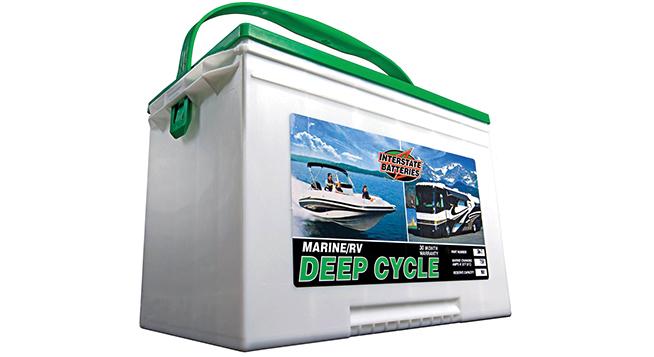
Photo Credit: Interstate Batteries
Lead Acid vs AGM Batteries
Q: I’m in the process of getting two new coach batteries for my older Class A motorhome, it’s a 2003 Georgie Boy Pursuit. I’ve been told that older vehicles do not have the capabilities for AGM batteries, and they take a special charger. Basically, the difference in price is not too much, but I’m on a tight budget, being almost 90 years young! What do you suggest? My wife says sell!
—William Weime, Sierra Vist, AZ
A: You have been told right about charging differences. The AGM batteries require 14.6 V – 14.8 V when performing a full charge, whereas standard lead-acid batteries need 13.8 V – 14.4 V, so this is what most older onboard chargers are designed to deliver – not the slightly higher voltage that AGM requires.
The AGM batteries can store a bit more power and can last somewhat longer. However, you probably stay in campgrounds with full hookups and haven’t been running out of battery power. Therefore in your case, I suggest that you stick with the conventional flooded cell batteries that you have been using.
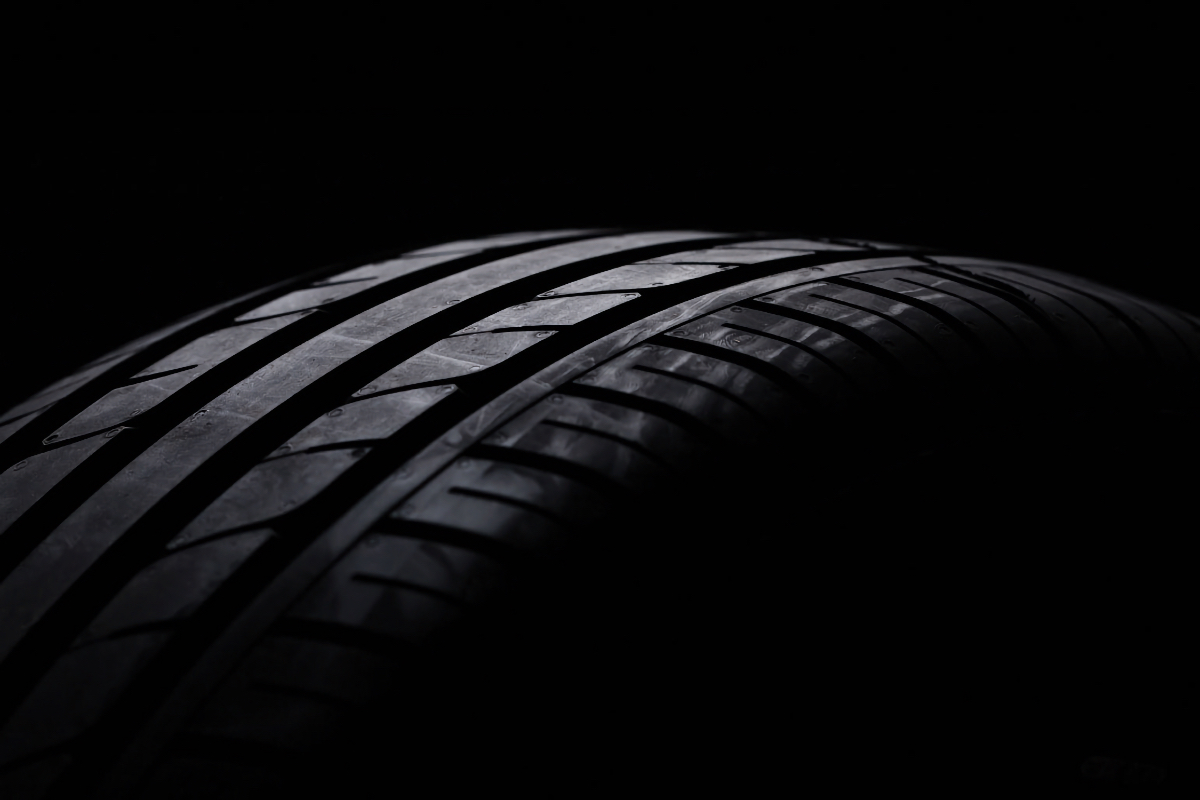
Photo Credit: Getty
“Cold” Tire Pressures
Q: We have a Forest River Cedar Creek 360RL fifth-wheel trailer. Tires are 235/85R16 with load rating G. Maximum tire pressure listed on the sidewall is 110 PSI cold. I live in Phoenix, Arizona, and when I air up my “cold” tires, the ambient air temperature might be over 100º F. I travel to San Diego, and the morning temperature could be in the 60s or 70s there.
The 30º to 40º difference makes a big difference in tire pressure. Am I over-inflating or under-inflating my tires in Phoenix? Cold tire temperature varies across the country. I am familiar with load inflation guides, but can’t find one for Westlake 235/85/16 G. What is the definition of a cold tire?
— Gary Nehls, Phoenix, AZ
A: The definition of a cold tire is generally accepted to be one that has not been driven on for an hour or more. Many tire experts consider 195º F as the maximum safe tire temperature. Beyond that point, the temperature will start degrading tire life, and this is important in your situation with the extremely hot weather.
For every 10º F increase in internal temperature, your tire pressure will increase by approximately 1 PSI. Conversely, for every 10º drop in temperature, the tire pressure will decrease by approximately 1 PSI. (Elevation changes also affect tire pressures; going higher increases pressure.) So a 40º temperature change would alter pressure by about 4 PSI. All you can do is adjust tire pressures before driving when they are at ambient temperature or let the tires cool off at a commercial tire inflation point before adjusting pressures.
When the temperature cools down substantially where you are using your RV, readjust tire pressure before you hit the road. If the tires were properly inflated at the start of your trip, before you started moving and before driving has heated them up, the tires are engineered and made to take into account the heat rise during warmer temperatures and the resultant pressure increase.
Hot weather is hard on tires and can increase the probability that they will come apart. So drive slower to reduce operating temperatures in extreme temperatures. Some companies don’t provide load-inflation tables, but you will find that they are very similar across brands for a tire of a given size and load rating.
There are two major schools of thought on the subject of trailer tire inflation. Those who inflate all tires to the maximum rated load pressure, and those like me who prefer to inflate tires based on their actual load rather than simply using the maximum rated pressure for several reasons. Overinflated tires bulge at the center of the tread, and this causes them to wear more at the center rather than evenly across the tread. Tires that are overinflated for the load ride harder, and trailers and their contents take a beating on rough roads. Overinflated tires also have less sidewall compliance and bruise more easily from potholes and other road obstacles. This also applies to motorhomes and tow vehicles. I also recommend adding a few PSI to allow for cooler temperatures and air leakage.
Here’s some information from Goodyear’s website that pretty much applies to all trailer tire brands:
“Your RV must be weighed when it is fully loaded. This includes passengers, food, clothing, water, fuel, supplies, any towed vehicles behind a motorhome, and the tow vehicle for an RV trailer. It is important to weigh your RV at a location that can provide axle-end-specific weights. You should not expect to measure equal loads at both ends of the same axle because floor plans and component locations vary significantly. However, you should distribute the load to obtain the best balance possible.
Use the following guidelines to ensure proper tire inflation pressure for motorhomes and RV trailer tow vehicles: Determine the heaviest end of each axle and use that load to select the inflation pressure for all tires on that axle. Refer to the appropriate Goodyear load and inflation table and select the inflation pressure for the load that is nearest to, but not less than, the load you measured, by moving up the table to the pressure line. Note that load and inflation tables include separate information for single and dual applications. For single applications, you can use the measured information directly, while for dual applications, you will need to divide the wheel position load you measured by two and then enter the table.
Unless trying to resolve poor ride quality problems with an RV trailer, it is recommended that trailer tires be inflated to the pressure indicated on the sidewall of the tire. Trailer tires experience significant lateral (side-to-side) loads due to vehicle sway from uneven roads or passing vehicles. Using the inflation pressure engraved on the sidewall will provide optimum load carrying capacity and minimize heat build-up.”
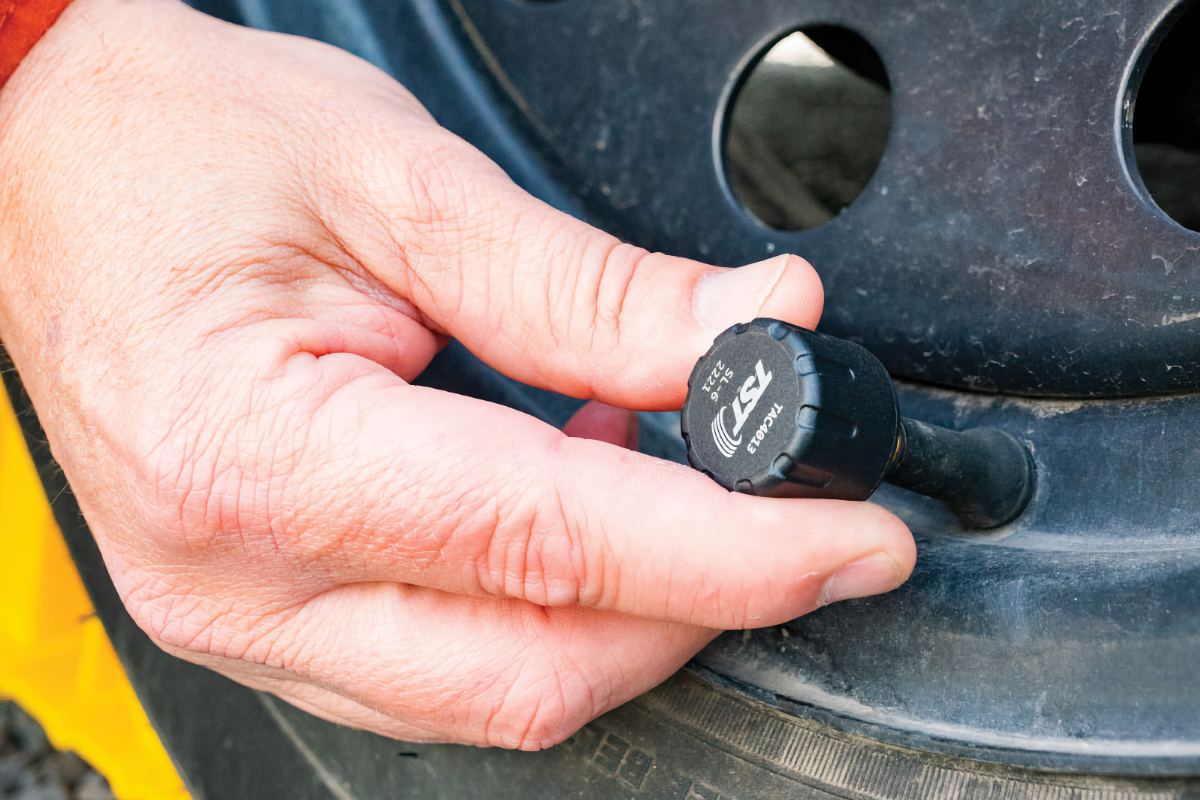
Photo Credit: Truck System Technologies
Tire Pressure Monitoring System Problem
Q: We are the owners of a 2023 Coachmen Leprechaun 319MB Class C motorhome. We recently traveled from Ohio to Florida, out West, and back to Ohio. We spend eight months a year in this camper.
We have met lots of people and heard the same things. When it comes to warranty service, it’s always a fight between the chassis and coach manufacturer. In our case, it is a sensor fault of the Tire Pressure Monitoring System (TPMS) flashing warning light on the dash of the Ford E-450. The Ford dealers say it’s a “radio frequency interference with the rear wheel tire pressure sensors” that is coming from coach manufacturer-supplied items. General RV says it’s a Ford issue.
The front wheel sensors show correct readouts, and the four rear sensors work fine until about 20 minutes of driving. Then the warning comes on again. Once you shut the engine off for 15 minutes, it clears, then 20 minutes later, it does the same thing. I called Coachmen, and they had no answer. I have now gone to two different Ford dealers and two different General RV dealers in Ohio and Florida. Any solution would be helpful.
—Steve Harper, Ashtabula, Ohio
A: Vehicles over 10,000 pounds such as this are not required by federal regulation to have a TPMS as standard equipment, but your coach has the optional factory system. With a factory-installed system, the OBD2 connector can be accessed with a scan tool (which includes the specialized software) to check on the TPMS.
These systems typically operate on a frequency of 433.92 MHz in the UHF band, and some aftermarket wireless electronic devices, such as hands-free phones, atomic clocks, and backup cameras, may interfere with the TPMS signals. It turns out that Coachmen tech services have just determined that the optional Coachmen installed Apple CarPlay radio you have, or the wireless microphone, are likely the culprits. This can be confirmed by removing the fuses for them and then seeing if the TPMS problem is resolved.
Coachmen in Indiana can be reached at 574-825-5821. For my readers with technical questions about TPMS units in general, Mike Benson of Truck Systems Technology has generously offered to have them call him at 210-420-0132. TST makes many of the TPMS units used in RVs.
Ask Us Anything
Questions about your road trip ride? Write us at [email protected]. Visit rv.com for more on RV gear and maintenance.

